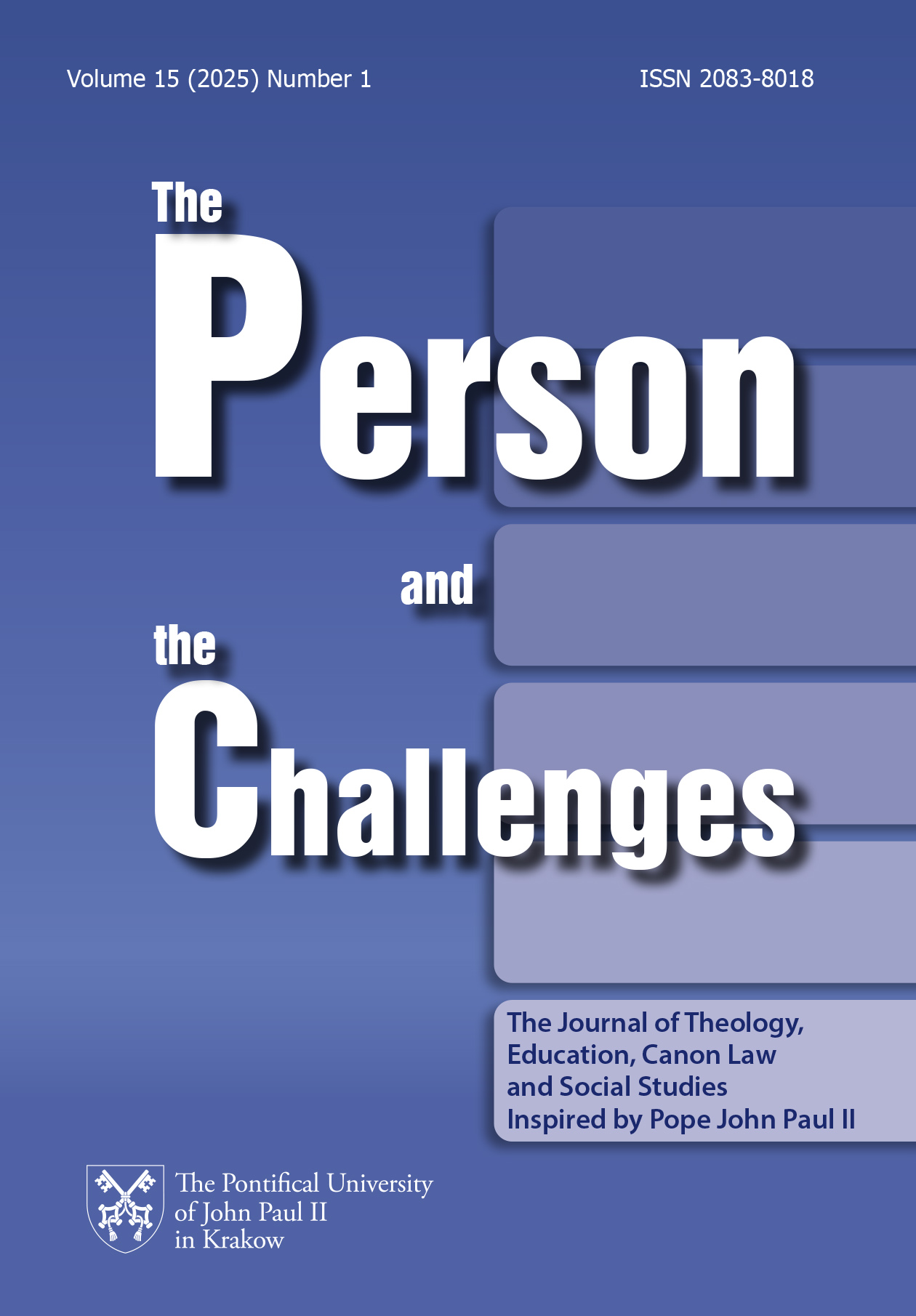Specificity of Luke’s description of the mission of John the Baptist. An analysis of Luke 3:3–9,16–17
DOI:
https://doi.org/10.15633/pch.15103Słowa kluczowe:
Christological titles, community of John the Baptist, Jesus, Messiah, St. LukeAbstrakt
The aim of this article is to highlight Luke’s editorial work in Luke 3:1–20, when he refers to John the Baptist. Undoubtedly, in his Gospel, the activity and teaching of the son of Zechariah are subordinated to Jesus, whom John the Baptist calls “the mightier”, the one who “is coming”. One can surely notice that the Evangelists look at John and his ministry in various ways. While telling the story of John the Baptist and Jesus, Luke selects and “edits” the materials available to him in order to emphasise the significance of Jesus and His mission. He focuses not so much upon the truth that the last of the Old Testament prophets is the predecessor of the Messiah, but rather upon God’s salvation that is drawing near. It could well be that he did this to contribute to a proper relationship between John’s disciples and the community of the early Church.
Bibliografia
Bovon F., Das Evangelium nach Lukas 1. Teilband Luke 1,1–9,50, Zürich–Neukirchen–Vluyn 1989, Benzinger–Neukirchener (Evangelisch-Katholischer Kommentar zum Neuen Testament, III/1).
Ernst J., Johannes der Täufer. Interpretation – Geschichte – Wirkungsgeschichte, Berlin–New York 1989, W. de Gruyter (Beihefte zur Zeitschrift für die neutestamentliche Wissenschaft, 53).
Fitzmyer J.A., The Gospel according to Luke (I–IX), New York 1981, Doubleday (The Anchor Yale Bible Commentaries, 28).
Łabuda P., Eliasz w chrystologii Łukasza, Tarnów 2012, Biblos.
Łabuda P., Śmierć i życie po śmierci wg Ewangelii św. Łukasza, Tarnów 2007, Biblos.
Lohmeyer E., Das Evangelium des Markus, Göttingen 1967, Vandenhoeck & Ruprecht (Kritisch-exegetischer Kommentar über das Neue Testament, 1).
Malina A., Chrzest Jezusa w czterech Ewangeliach. Studium narracji i teologii, Katowice 2007 (Studia i Materiały Wydziału Teologicznego w Katowicach, 34).
Mickiewicz F., Ewangelia według św. Łukasza, rozdziały 1–11, Częstochowa 2011, Edycja św. Pawła (Nowy Komentarz Biblijny. Nowy Testament, III/1).
Mickiewicz F., Orędzie Jana Chrzciciela o Królestwie Bożym (Mt 3,2.7–12; Luke 3,7–9.6–18) i jego wypełnienie w działalności Jezusa, in: Ewangelia o Królestwie, edited by A. Paciorek et al., Lublin 2009, Wydawnictwo KUL, pp. 131–169.
Nolland J., Luke (1–9,20), Dallas 1989, Word Books (Word Biblical Commentary, 35a).
Öhler M., Elia im Neuen Testament. Untersuchungen zur Bedeutung des alttestamentlichen Propheten im frühen Christentum, Berlin–New York 1997, Walter de Gruyter (Beihefte zur Zeitschrift für die neutestamentliche Wissenschaft, 88).
Paciorek A., “Wydajcie godny owoc nawrócenia…” Janowe głoszenie nad Jordanem (Mt 3,7–12), in: Ku liturgii nadziei, edited by R. Biel, Tarnów 2005, Biblos, pp. 65–76.
Pajor P., Znaczenie chrztu Duchem Świętym i ogniem, “Roczniki Teologiczno-Kanoniczne” 14 (1967) no 1, pp. 49–64.
Rese M., Alttestamentliche Motive in der Christologie des Lukas, Gütersloher 1969, Gütersloher Verlagshaus G. Mohn (Studien zum Neuen Testament, 1).
Schürmann H., Das Lukasevangelium. 1. Teil: Kommentar zu Kap. 1,1–9,50, Freiburg–Basel–Wien 1969, Herder (Herders theologischer Kommentar zum Neuen Testament, 3.1).
Stegemann H., Esseńczycy z Qumran, Jan Chrzciciel i Jezus, Kraków 2002, Enigma Press (Biblioteka Zwojów, 9).
Pobrania
Opublikowane
Numer
Dział
Licencja
Prawa autorskie (c) 2025 Piotr Łabuda

Utwór dostępny jest na licencji Creative Commons Uznanie autorstwa 4.0 Międzynarodowe.
Autorzy publikujący w czasopiśmie udzielają jego wydawcy zgody o następującej treści:
- Autor zachowuje autorskie prawa majątkowe do utworu, a jednocześnie udziela wydawcy czasopisma zgody na jego pierwszą publikację w wersji drukowanej i wersji online na licencji Creative Commons Uznanie autorstwa 4.0 Międzynarodowe oraz zgody na wykonywanie opracowań, w tym przekładów.
- Autor ma możliwość udzielania zgody niewyłącznej na opublikowanie utworu w wersji, która ukazała się w czasopiśmie (np. zamieszczenia go w repozytorium instytucjonalnym lub opublikowania w książce), wraz z informacją o jego pierwszej publikacji w czasopiśmie.
- Autor może umieścić swój utwór online (np. w repozytorium instytucjonalnym lub na swojej stronie internetowej) jeszcze przed zgłoszeniem utworu do czasopisma.

